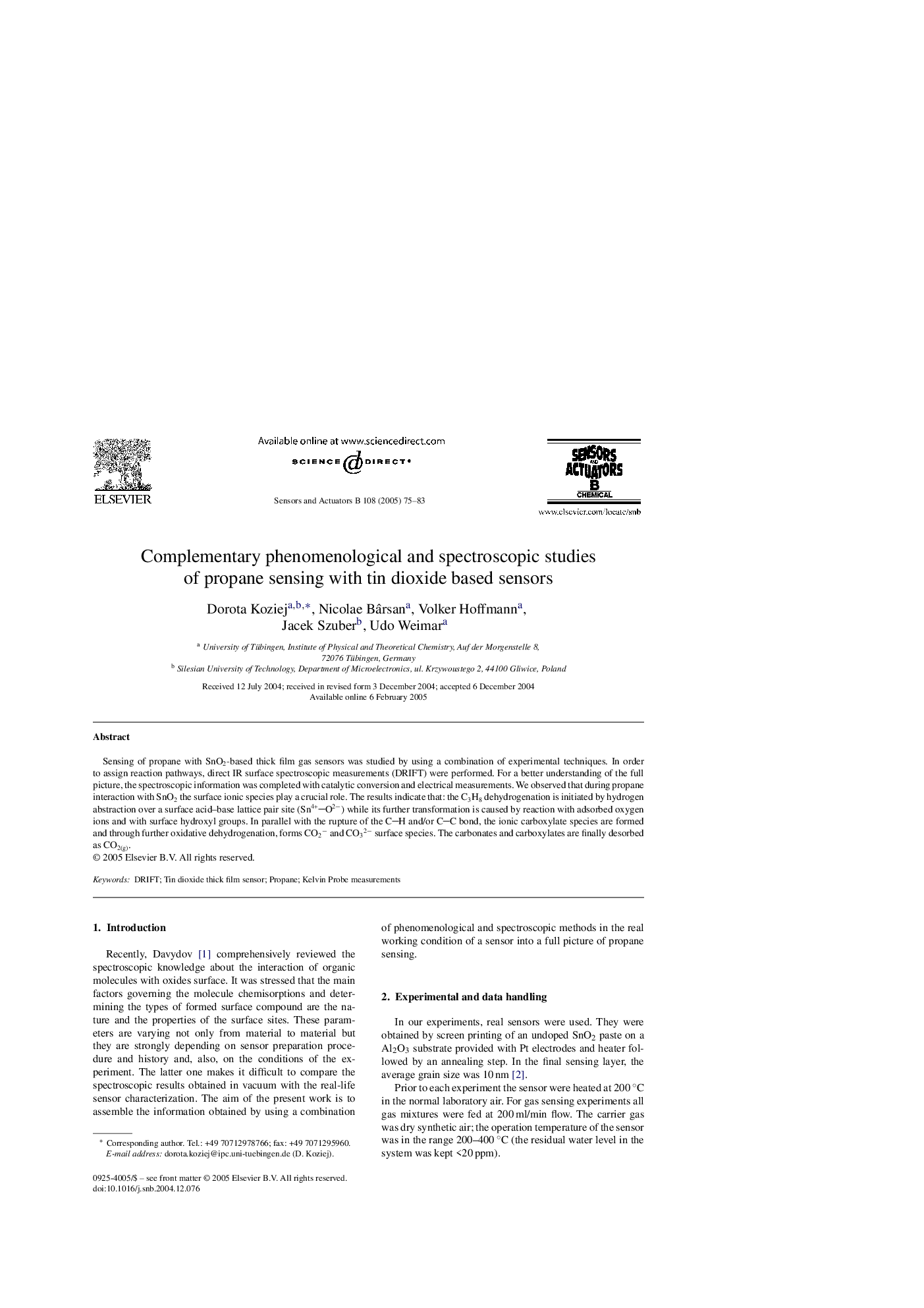| Article ID | Journal | Published Year | Pages | File Type |
|---|---|---|---|---|
| 9700908 | Sensors and Actuators B: Chemical | 2005 | 9 Pages |
Abstract
Sensing of propane with SnO2-based thick film gas sensors was studied by using a combination of experimental techniques. In order to assign reaction pathways, direct IR surface spectroscopic measurements (DRIFT) were performed. For a better understanding of the full picture, the spectroscopic information was completed with catalytic conversion and electrical measurements. We observed that during propane interaction with SnO2 the surface ionic species play a crucial role. The results indicate that: the C3H8 dehydrogenation is initiated by hydrogen abstraction over a surface acid-base lattice pair site (Sn4+O2â) while its further transformation is caused by reaction with adsorbed oxygen ions and with surface hydroxyl groups. In parallel with the rupture of the CH and/or CC bond, the ionic carboxylate species are formed and through further oxidative dehydrogenation, forms CO2â and CO32â surface species. The carbonates and carboxylates are finally desorbed as CO2(g).
Related Topics
Physical Sciences and Engineering
Chemistry
Analytical Chemistry
Authors
Dorota Koziej, Nicolae Bârsan, Volker Hoffmann, Jacek Szuber, Udo Weimar,
